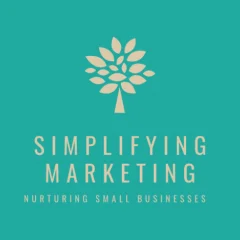Unveiling the Art of Crafting a Compelling Unique Value Proposition
Introduction: The Power of a Captivating UVP
In today’s fiercely competitive business landscape, standing out from the crowd is essential for success. Entrepreneurs and startup enthusiasts are well aware that an innovative idea alone is not enough – you need a robust strategy to effectively communicate the value of your product or service. This is where the Unique Value Proposition (UVP) comes into play. In this article, we will delve deep into the art of filling out the UVP section of the Lean Startup Canvas, a tool that can significantly enhance your startup’s chances of success.
Understanding the Lean Startup Canvas
Before we dive into the intricacies of crafting a compelling UVP, let’s briefly revisit the Lean Startup Canvas. A brainchild of entrepreneur Eric Ries, the Lean Startup methodology emphasizes iterative product development and validated learning. At the heart of this methodology lies the Lean Startup Canvas, a visual framework that guides startups in defining and refining their business models. One of the crucial sections of the canvas is the Unique Value Proposition.
The UVP Unveiled: What Sets You Apart?
Your Unique Value Proposition is the quintessential element that defines why your product or service is different from the rest. It’s not just about listing features; it’s about showcasing the unique benefits that your target audience can enjoy. A powerful UVP addresses a specific problem, presents a solution, and delivers a promise of value that’s irresistible.
1. Identify Your Target Audience
Crafting a compelling UVP begins with a crystal-clear understanding of your target audience. Who are they? What are their pain points? What are their aspirations? Tailoring your UVP to resonate with your audience is the cornerstone of its effectiveness. For instance, if you’re launching a task management app for busy professionals, your UVP might revolve around helping them “Reclaim Your Productivity in a Chaotic World.”
2. Define the Problem You’re Solving
Your product or service exists to solve a problem for your target audience. Clearly articulating this problem in your UVP showcases your empathy and understanding. If you’re offering a meal kit delivery service, your UVP could highlight how you’re “Eliminating Dinner Dilemmas with Fresh Ingredients and Chef-Inspired Recipes.”
3. Present Your Distinct Solution
Now comes the pivotal point – your solution. What do you offer that’s different from existing options? Your solution could be technological innovation, a unique approach, or a combination of factors. Imagine you’re introducing a language learning platform; your UVP might emphasize “Mastering Mandarin Made Fun: Gamified Learning for Effortless Fluency.”
4. Convey Unmatched Benefits
Your UVP should convey the benefits your audience will gain from choosing your solution. How will their lives improve? Will you save them time, money, or effort? Going back to the language learning platform, you might emphasize “Travel with Confidence: Unlock a World of Opportunities with Language Mastery.”
5. Craft a Compelling Promise
A promise seals the deal. It’s the commitment you’re making to your customers. Make it compelling, achievable, and impactful. If you’re running a fitness coaching service, your UVP could promise “Unleash Your Potential: Your Dream Body, One Rep at a Time.”
6. Keep It Clear and Concise
A UVP is not the place for jargon or complex language. Keep it simple, concise, and easy to understand. Your audience should grasp the essence of your offering within seconds. Remember, clarity trumps complexity.
7. Inject Emotion and Appeal
Emotion is a powerful persuader. Infuse emotion into your UVP to make it resonate on a deeper level. Tap into desires, fears, or aspirations your audience holds. If you’re marketing a cybersecurity solution, evoke a sense of security with “Guarding Your Digital Life: Unbreakable Online Protection.”
8. Test and Refine
Your first attempt at a UVP might not be the ultimate winner. The Lean Startup methodology encourages constant testing and learning. Gather feedback from potential customers, conduct surveys, and analyze the effectiveness of your UVP. Refine it based on real-world insights.
9. Differentiation is Key
In a sea of options, differentiation is your lifeboat. Your UVP should highlight what makes you stand out. Whether it’s your eco-friendly packaging, 24/7 customer support, or hassle-free returns, ensure that your unique qualities shine.
10. Align with Your Brand Identity
Your UVP should seamlessly align with your overall brand identity. It’s not just about words; it’s about the feeling and perception you evoke. If your brand is all about luxury, make sure your UVP exudes opulence.
Conclusion
Crafting a captivating UVP is a skill that every entrepreneur must master. It’s the bridge between your brilliant idea and the hearts of your target audience. In the world of startups, where attention is scarce and choices are abundant, a compelling UVP can be the deciding factor. So, embrace the art of standing out from the crowd, and let your Unique Value Proposition shine brightly amidst the competition.
Remember, a UVP is not set in stone. As your startup evolves and the market shifts, your UVP might need a facelift. Stay attuned to your audience, stay ahead of the trends, and keep refining your UVP for sustained success.
References
- Ries, E. (2011). The Lean Startup: How Today’s Entrepreneurs Use Continuous Innovation to Create Radically Successful Businesses. Crown Publishing Group.
- Blank, S. G. (2013). Why the Lean Startup Changes Everything. Harvard Business Review.
- Cialdini, R. B. (1984). Influence: The Psychology of Persuasion. HarperCollins.


